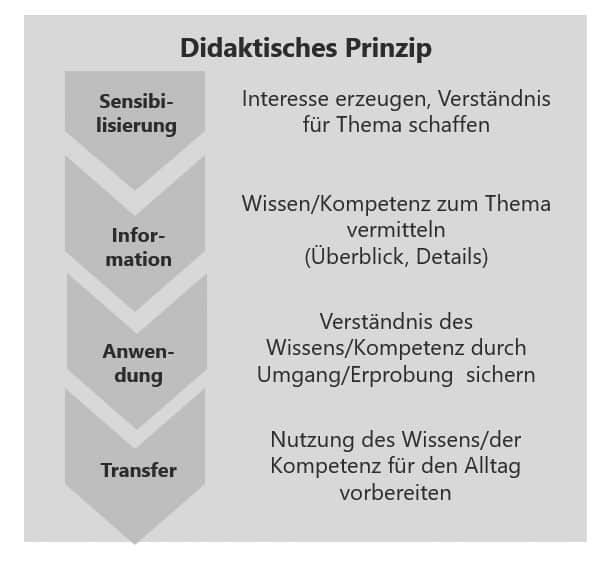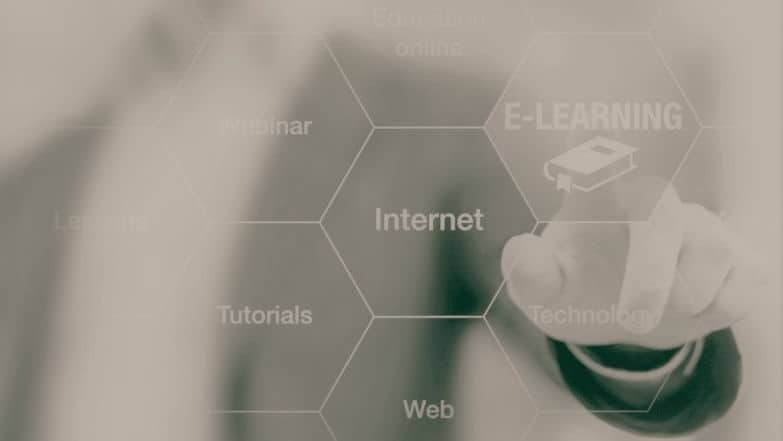Learning and Learner’s Journey
Good old times
Times are long gone when established trainer personalities with a main competence in classical methods were amused when hearing the term “e-learning”. To be honest, I belonged to that guild when virtual learning emerged around 15 years ago and learning modules were just as unattractive as boring. The competence to enable learning was reserved to trainers and instructor-led trainings (ILT). Content was merely provided in live trainings – ranging from sensitisation for topics through required knowledge to appropriate behaviour. Preferably, during two consecutive days at a decent meeting venue with the usual convenience. Huge slide flows were often presented until even the last participant dropped off. That pattern was pricey, intense and inefficient. Would the term “learning journey” already have existed, most probably we would have understood a multi-layer training programme such as a curriculum.
Today, e-learning is a key player
Meanwhile, e-learning has gained momentum and conquered its territory. Today, not only formats and content editing are diverse and interesting but also experts such as FKC design highly attractive layouts for the content. E-learning fits for capacity building of some competences better as it is a more efficient and more effective solution. Especially when it comes to acquiring knowledge and related fields of application, e-learning is an established resource. Smart e-learning modules are far more convenient to provide content and support individual knowledge build-up than seminars or self-study programmes such as PDF’s can do. E-learning also contributes remarkably to preparation and follow-up of classical and even new, innovative modules such as workshops and e-coaching. Besides that, it can be used as learning companion, e.g. as self-guiding eBooks.
Learning Journeys and Learner‘s Journeys
At TCJG e-learning is a solid part when learning journeys are designed. At the same time, we understand e-learning as a component of a learning journey that is supplied by a variety of different formats. Let’s have a look at the term “Learning Journey”. What do we understand by this? Currently, the term “journey” is used massively, e.g. in “Customer Journey” or “Employee Journey” and defines the individual path of a person towards his “goal” (respectively, the satisfaction of his own personal needs). In this light, a Learning Journey is the path of a learner towards the build-up of single or multiple competences. The Journey can be guided by topics (e.g. leadership) or it can be highly individualised. The latter would focus on a continuous build-up of a diverse and individual competence profile.
Characteristics of contemporary Learning Journeys
Thus, Learning Journeys can be understood as individual learning paths that offer various learning modules or smaller learning nuggets that are entirely aligned towards the achievement of a goal. Single components are built on one another or complement and support each other. Excellent Learning Journeys should offer a variation to daily operations, diverse ways of activation and unexpected surprises. They do not follow a certain standard but are rather individual and can be shaped by the learner himself.  Despite all individualisation, my team and I always get inspired by a didactic core principle when creating new Learning Journeys. The following steps are verified to sustain learning. First, the learner always gets into contact with the related topic. This is best done on an emotional basis to sensitise the learner (e.g. via a video) and next, offer selected input for the rational mind (e.g. via an e-learning sequence). After that, the emotional and cognitive input can be experienced and the capacity to act is revealed (e.g. via a Live Workshop). Finally, we highlight the added value by inspiring the learner to transfer the gained knowledge and capability into his daily routine and plan the application of new knowledge and skills precisely. Today, essential components of Learning Journeys are, beside mentioned diverse formats, learning communities and peer work as well as the use of learning companions such as the eBook or an e(Coach). In addition, user generated content is currently indispensable.
Despite all individualisation, my team and I always get inspired by a didactic core principle when creating new Learning Journeys. The following steps are verified to sustain learning. First, the learner always gets into contact with the related topic. This is best done on an emotional basis to sensitise the learner (e.g. via a video) and next, offer selected input for the rational mind (e.g. via an e-learning sequence). After that, the emotional and cognitive input can be experienced and the capacity to act is revealed (e.g. via a Live Workshop). Finally, we highlight the added value by inspiring the learner to transfer the gained knowledge and capability into his daily routine and plan the application of new knowledge and skills precisely. Today, essential components of Learning Journeys are, beside mentioned diverse formats, learning communities and peer work as well as the use of learning companions such as the eBook or an e(Coach). In addition, user generated content is currently indispensable.
Outlook into the future of learning and Learner’s Journeys
Learning Journeys are currently in a transformation process, too. Recently, Micro Teaching suppressed current learning formats (even around e-learning) progressively and even the Learning Journey is subject to pressure to adapt. Obviously, trends direct the development away from self-contained learning units, such as WBT’s, towards smallest learning nuggets. The nuggets are available at any time, always accessible and expandable via user-generated content that can be compiled individually in a personalised playlist. What would the established trainer guild respond to all of this… Links/Sources: Learning Journey
Learning Journeys – SlideShare
Different types of Learning Journeys



